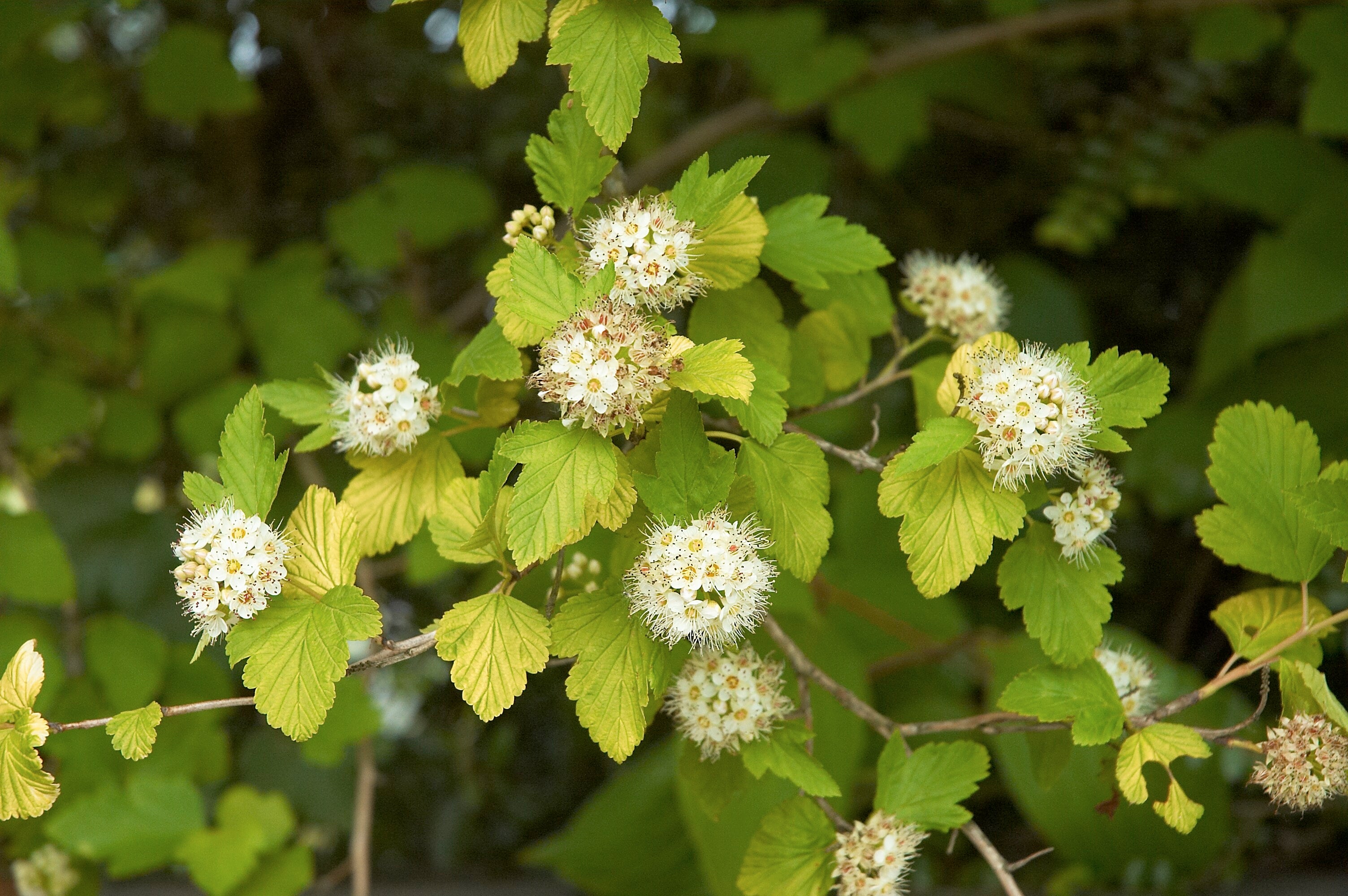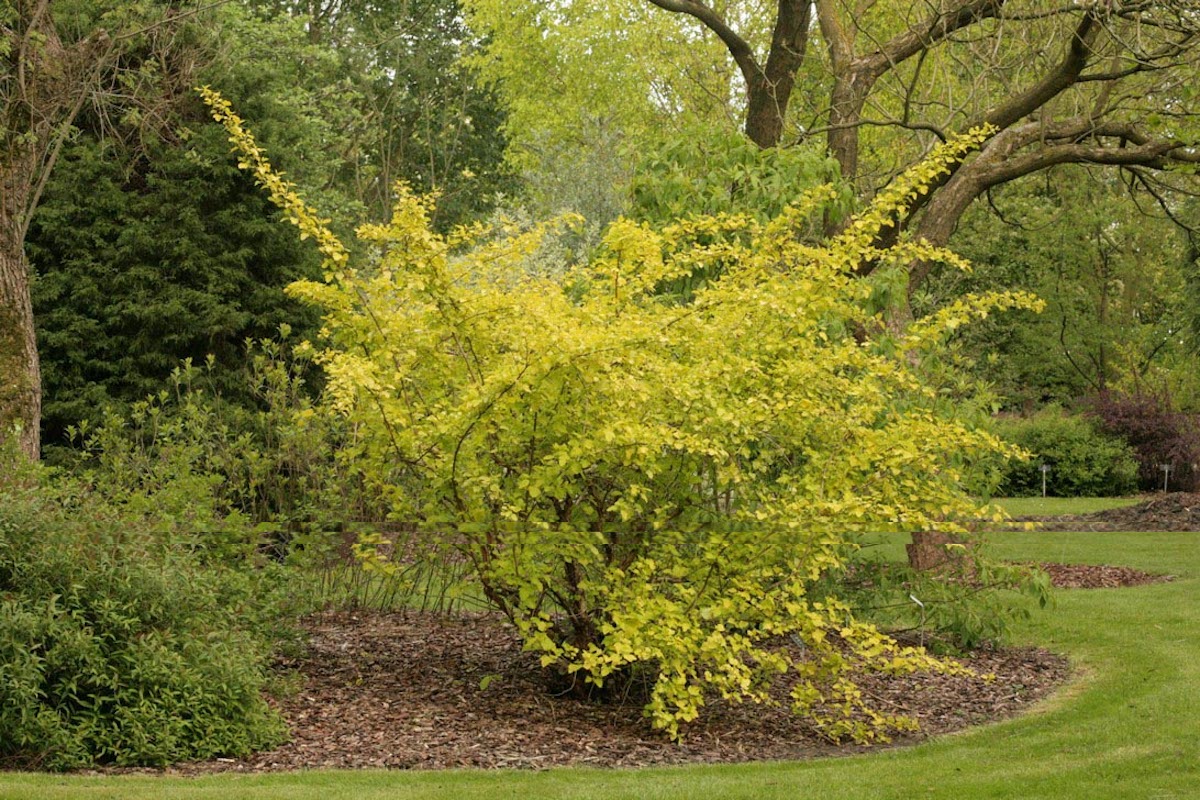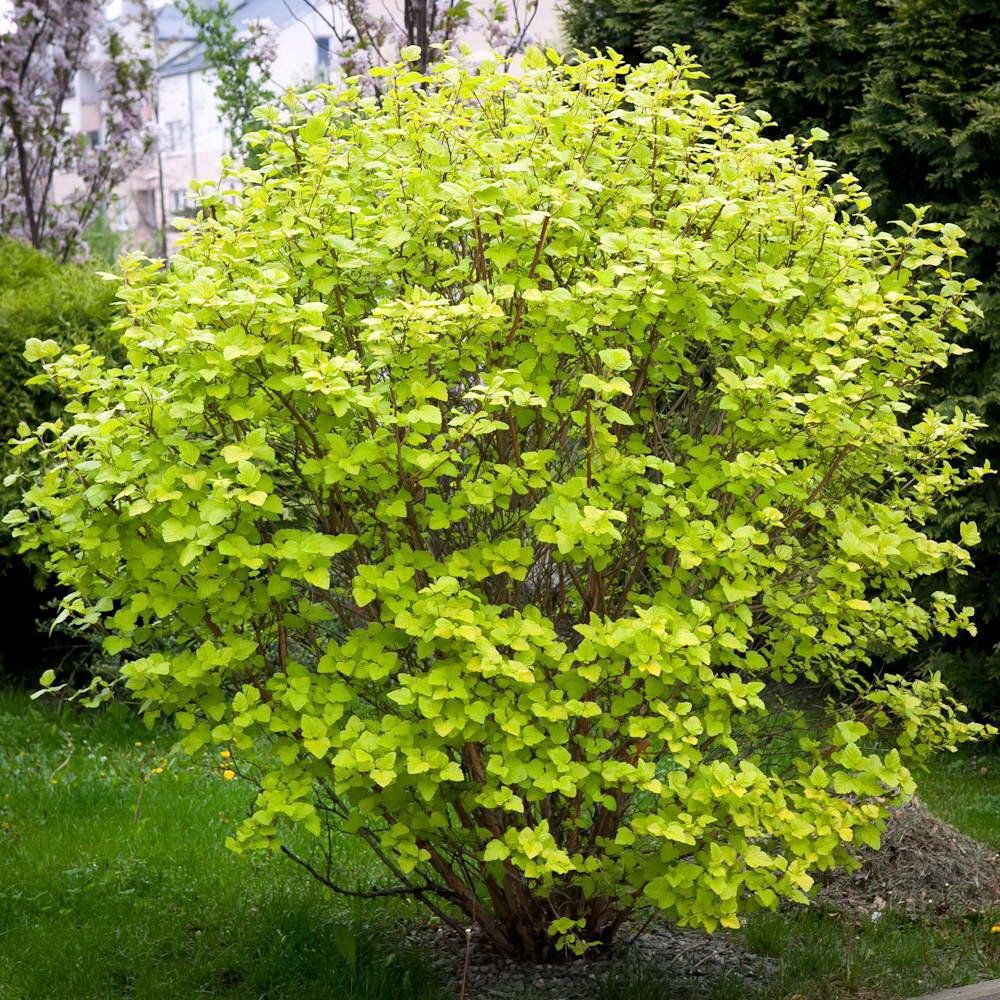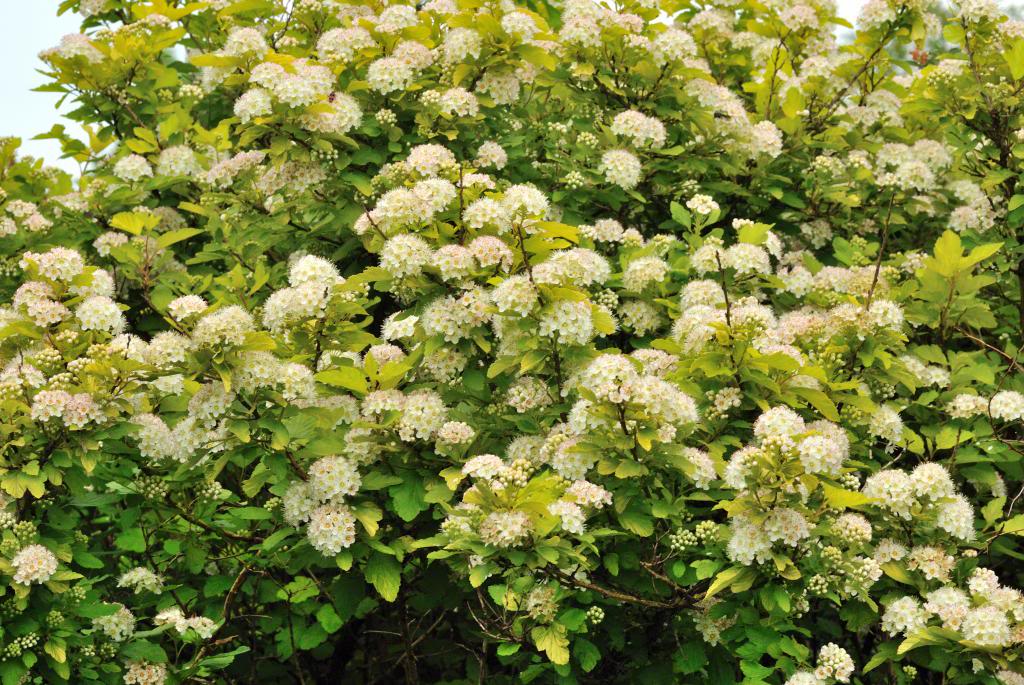Physocarpus opulifolius 'Luteus'
Approx. 0.5 litre pot
About this cultivar:
Physocarpus opulifolius 'Luteus' is an adaptable deciduous shrub with golden foliage that is sun-proof and doesn’t burn. Brilliant golden leaves will turn a light bright yellow-green in summer though in full blazing sun the outermost leaves tend to hold onto yellow tone. This form tends to grow wider than tall – unusual in that most Ninebarks are upright and somewhat vase-shaped.
And the autumn colour? It’s a fluorescent combination of orange, gold, red, scarlet, coral and occasionally purple. White flower clusters are showy followed by reddish pink seed heads that linger long at the ends of branches.
The winter affect is somewhat coarse but can contrast nicely with other deciduous plants and especially evergreens; the light brown bark does exfoliate and the seed pods are persistent.
Sometimes called 'Aurea'
- Position: Full sun, partial shade
- Soil: Almost any soil, grows well in Ballyrobert
- Flowers: June, July
- Other features: Bees and Butterflies, Interesting Foliage or Fruit
- Hardiness: H7 - Hardy in the severest European continental climates (< -20°C), Fully hardy, grows well in Ballyrobert, continental
- Habit: Suckering, bushy
- Foliage: Deciduous
- Height: 200 - 300 cm (6 - 10ft)
- Spread: 200 - 350 cm (6 - 12 ft)
- Time to full growth: 10 to 20 years
- Plant type: Shrub
- Colour: White, yellow
- Goes well with: --
About this genus:
Physocarpus (fy-so-car-pus), commonly called ninebark, is a genus of flowering plants in the rose family (Rosaceae), native to North America and northeastern Asia.The genus name Physocarpus comes from the Greek for bladder fruit, referring to the inflated fruits of some species.The common name ninebark refers to the peeling bark of mature branches, which comes away in strips.
Physocarpus are deciduous shrubs with alternately arranged leaves. The inflorescence is a cluster of bell-shaped flowers with rounded white or pink petals. Anywhere eye catching masses of foliage are needed, Physocarpus can fit the bill. With a leafy, casual look, Physocarpus presents luscious leaves, distinctive tight clusters of small flowers, and earthy red pillow-shaped fruit along their stems. These cold tolerant, plants possess a durable, yet alluring bent, in almost any situation that isn't waterlogged or fully shaded. If you need a smaller specimen, cutting Physocarpus to the ground in early spring will result in a flush of even darker foliage and, of course, a more compact shrub.
What to plant with? Well, we think it makes an outstanding background or canvas for white, yellow, orange and red flowers. Some ipairings from our garden include Rudbeckia, Lupinus, and Chrysanthemum.








